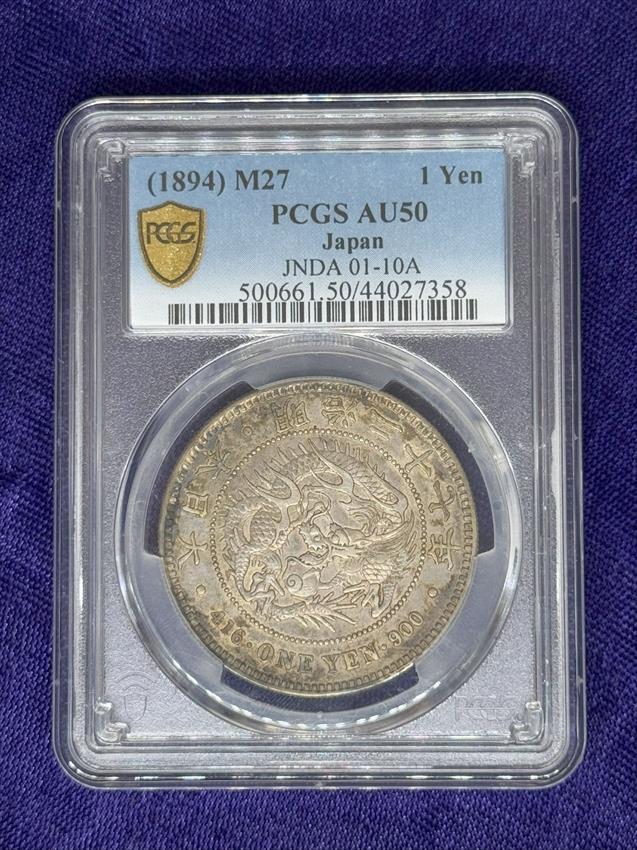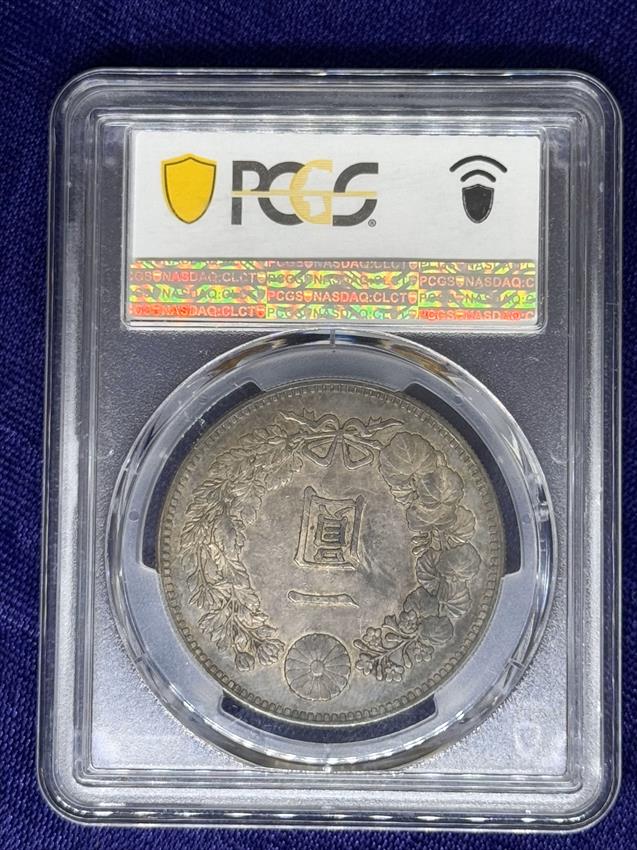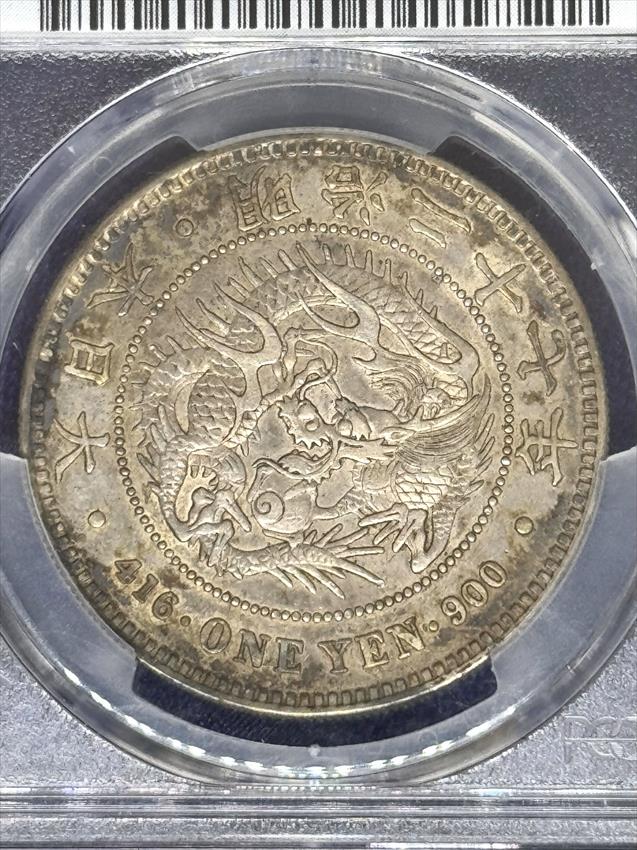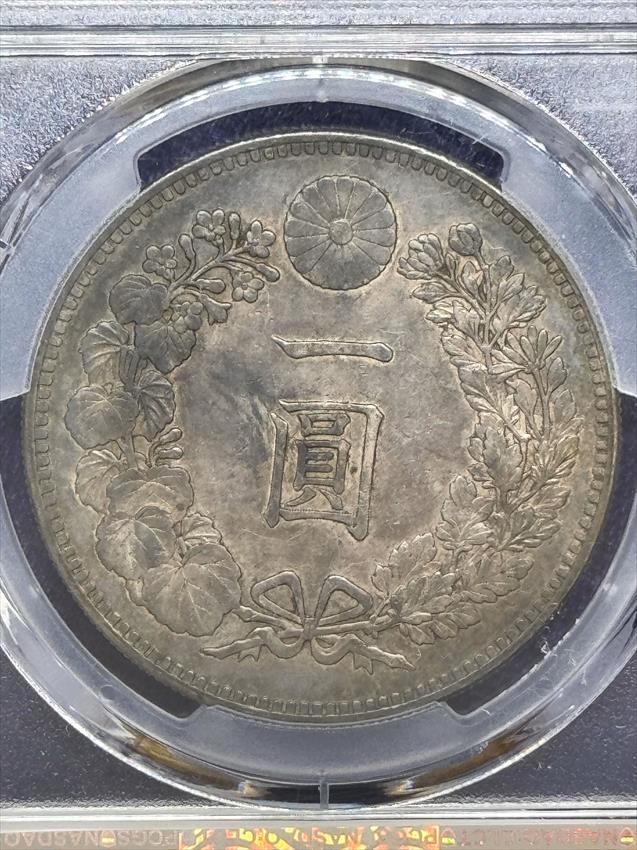
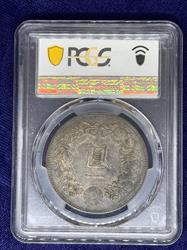
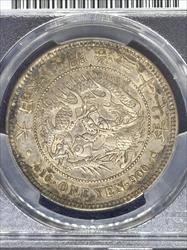
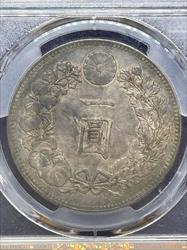
Silver Yen 1894 / Meiji Year 27 AU 50
$195.00
$201.34
Check/Wire
Credit Card
| Quantity | Check/Wire | Credit Card |
|---|---|---|
| 1+ | 195.00 | 201.34 |
- SKU: BFB005771
- Categories: WORLD ASIA JAPAN
The Japanese yen (also denoted as 円 and ¥) was first introduced in 1871 and is still Japan's currency today. It replaced the coinage of the Tokugawa shogunate as well as hansatsu, the paper money issued by feudal han estates. Modern-day yen coins are made of 100% aluminum, but this one is 90% silver and was minted during the Meiji Era.
The Meiji Era was the reign of Mutsuhito, posthumously known as Emperor Meiji. He ascended the throne in 1852, but the Tokugawa shogunate (military government) held more control over Japan at the time. In 1868, a coup deposed the shogunate and enabled Meiji to rule the country. During his reign, Japan transformed from a feudal society vulnerable to colonization into an organized and powerful nation. New infrastructure was laid, such as the first Japanese railroads, telegraphs, and telephones. The Meiji period also saw the beginnings of the Westernization of Japan, from the implementation of a European-style banking system to changes in clothing and architecture. Class distinctions were largely dissolved - notably, the samurai lost their distinction of being the only warriors. However, many ex-samurai rose to positions of power in the new democratic government, and samurai ideals were taught in the new school systems. Japan also emerged as a world power after defeating China and Russia in separate wars. The Meiji Era ended with Emperor Meiji’s death in 1912.
This coin was graded AU 50 (almost uncirculated 50), using the Sheldon grading scale from 1 to 70. It was graded by the Professional Coin Grading Service (PCGS). Here is more information on PCGS's grading scale.
Obverse: 年 四 十 二 治 明 · 本 日 大 (translation: Year 24 of Meiji · Great Japan) · 416 · ONE YEN · 900 · Dragon within beaded circle, legends above, written value below
Reverse: 一 圓 (translation: 1 Yen) Chrysanthemum flower (Coat of Arms & Emperor's Royal Seal) at top, Paulownia branches and leaves on left, Chrysanthemum branches and leaves on right
Reference: Y A25.3, JNDA 01-10A
The Meiji Era was the reign of Mutsuhito, posthumously known as Emperor Meiji. He ascended the throne in 1852, but the Tokugawa shogunate (military government) held more control over Japan at the time. In 1868, a coup deposed the shogunate and enabled Meiji to rule the country. During his reign, Japan transformed from a feudal society vulnerable to colonization into an organized and powerful nation. New infrastructure was laid, such as the first Japanese railroads, telegraphs, and telephones. The Meiji period also saw the beginnings of the Westernization of Japan, from the implementation of a European-style banking system to changes in clothing and architecture. Class distinctions were largely dissolved - notably, the samurai lost their distinction of being the only warriors. However, many ex-samurai rose to positions of power in the new democratic government, and samurai ideals were taught in the new school systems. Japan also emerged as a world power after defeating China and Russia in separate wars. The Meiji Era ended with Emperor Meiji’s death in 1912.
This coin was graded AU 50 (almost uncirculated 50), using the Sheldon grading scale from 1 to 70. It was graded by the Professional Coin Grading Service (PCGS). Here is more information on PCGS's grading scale.
Obverse: 年 四 十 二 治 明 · 本 日 大 (translation: Year 24 of Meiji · Great Japan) · 416 · ONE YEN · 900 · Dragon within beaded circle, legends above, written value below
Reverse: 一 圓 (translation: 1 Yen) Chrysanthemum flower (Coat of Arms & Emperor's Royal Seal) at top, Paulownia branches and leaves on left, Chrysanthemum branches and leaves on right
Reference: Y A25.3, JNDA 01-10A

